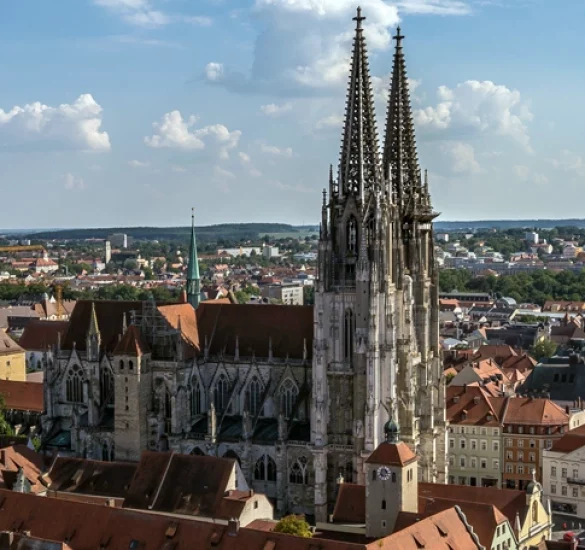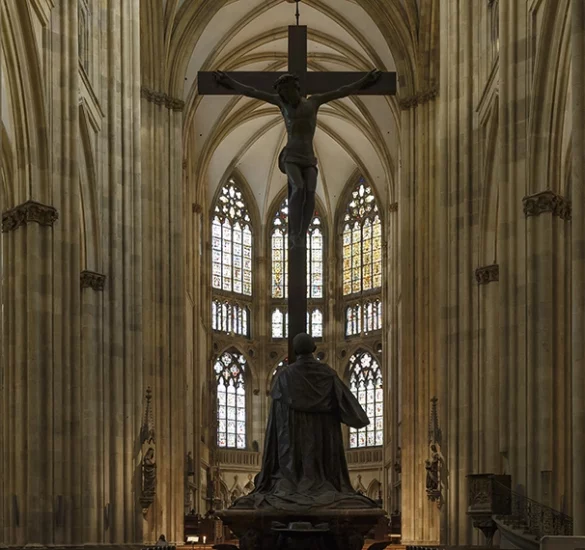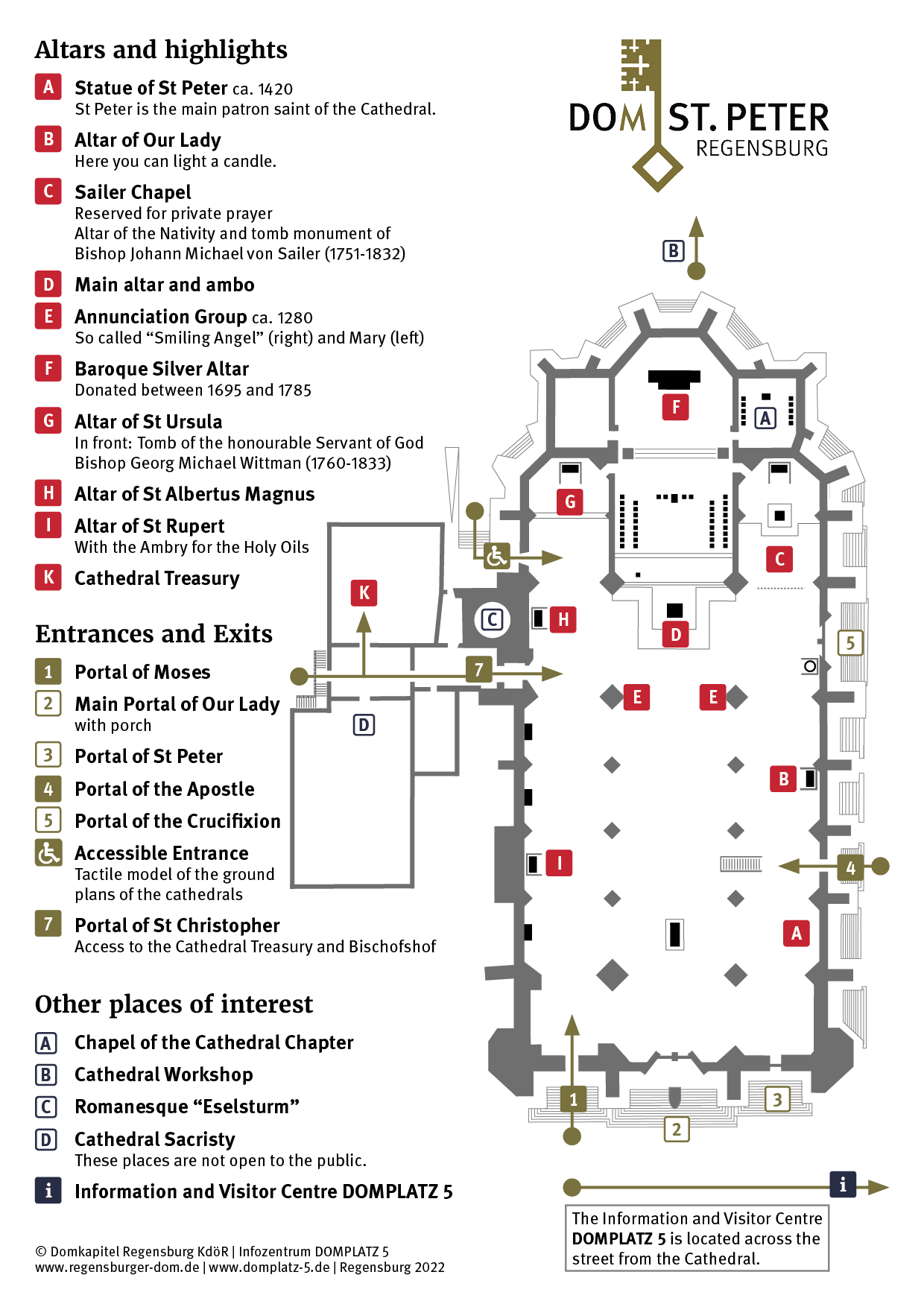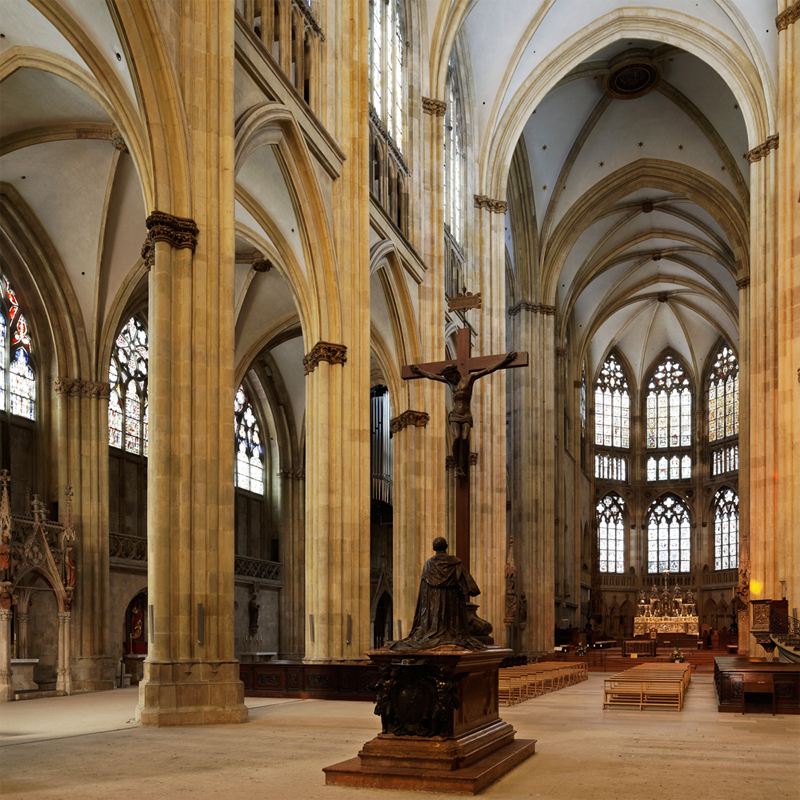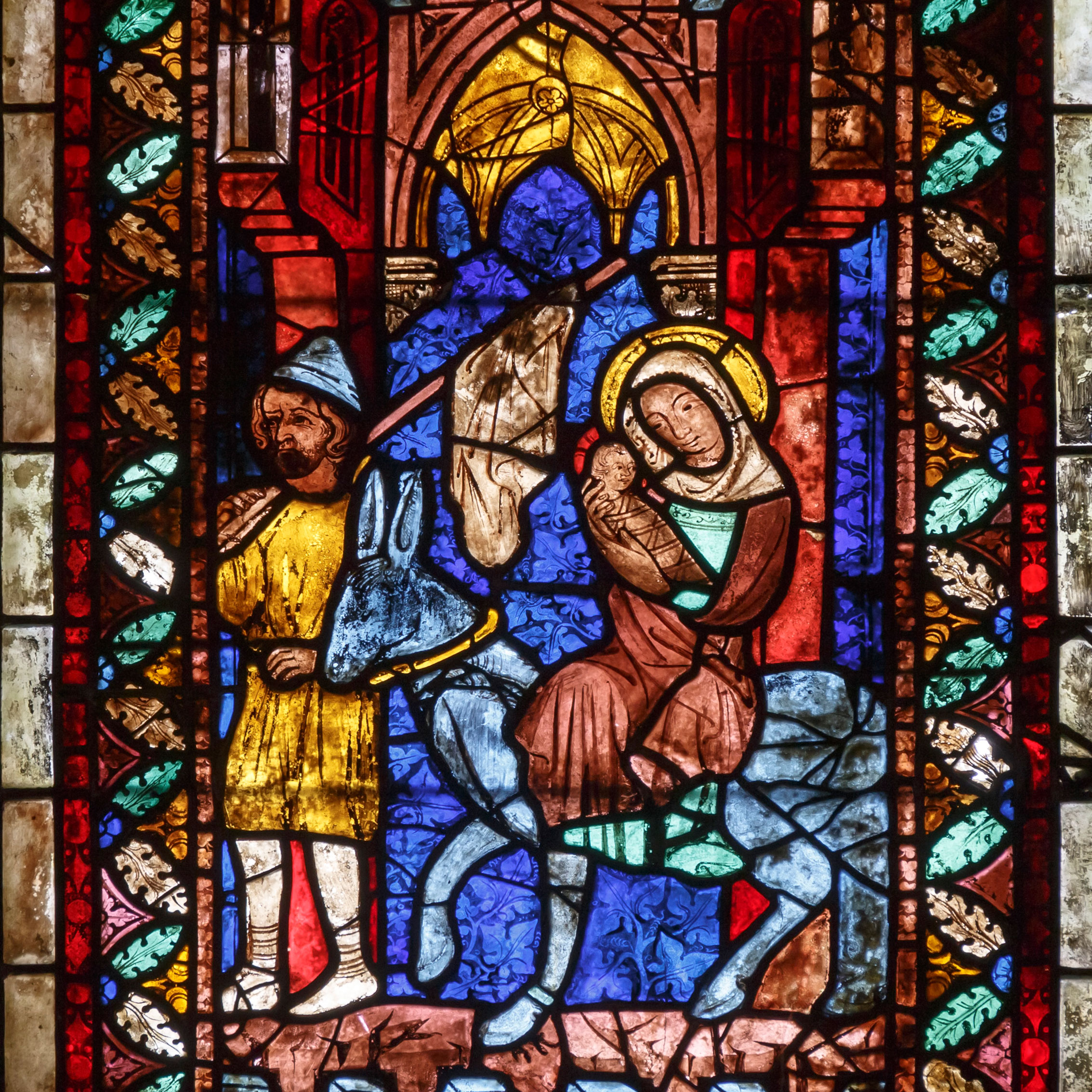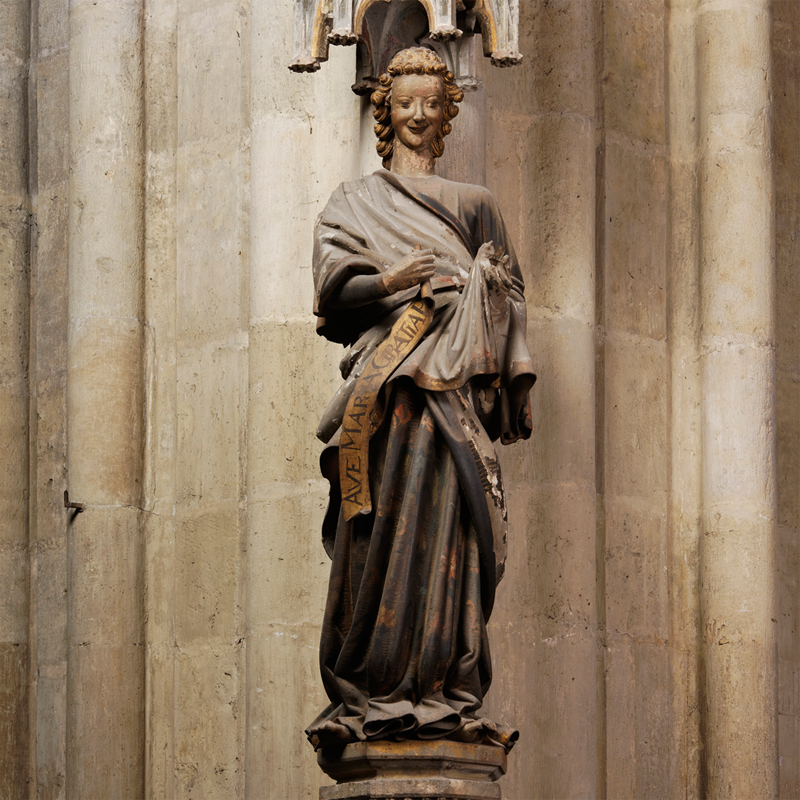Datenschutzerklärung
Wir freuen uns über Ihren Besuch auf unserer Webseite und über Ihr Interesse an unseren Einrichtungen und Dienstleistungen. Der Schutz Ihrer persönlichen Daten ist uns ein ernstes Anliegen. In der Diözese Regensburg gelten - wie in allen deutschen (Erz-)Diözesen - für die Verarbeitung personenbezogener Daten die Bestimmungen des Gesetzes über den Kirchlichen Datenschutz (KDG) einschließlich der Verordnung zur Durchführung der Anordnung über den kirchlichen Datenschutz (KDO-DVO) (zu finden unter www.bistum-regensburg.de/bistum/dienst-fuer-pfarreien/datenschutz/) sowie die sonstigen anzuwendenden kirchlichen und staatlichen Datenschutzvorschriften. Wir verarbeiten Ihre personenbezogenen Daten im Rahmen dieser Webseite ausschließlich gemäß den gesetzlichen Datenschutzvorschriften sowie in dieser Datenschutzerklärung dargestellt.
Allgemeines
Personenbezogene Daten: „Personenbezogene Daten“ sind alle Informationen, die sich auf eine identifizierte oder identifizierbare natürliche Person (im Folgenden „betroffene Person“) beziehen; als identifizierbar wird eine natürliche Person angesehen, die direkt oder indirekt, insbesondere mittels Zuordnung zu einer Kennung wie einem Namen, zu einer Kennnummer, zu Standortdaten, zu einer Online-Kennung oder zu einem oder mehreren besonderen Merkmalen, die Ausdruck der physischen, physiologischen, genetischen, psychischen, wirtschaftlichen, kulturellen oder sozialen Identität dieser natürlichen Person sind, identifiziert werden kann. Beispiele: Name, Adresse, E-Mail-Adressen, Nutzerverhalten.
Soweit nachfolgend nicht ausdrücklich anderweitig beschrieben, gilt im Rahmen des Betriebs und der Nutzung dieser Webseite Folgendes:
Drittländer: Ihre Daten werden nur in Deutschland verarbeitet. Wir beabsichtigen nicht, ihre personenbezogenen Daten an oder in ein Drittland oder an eine internationale Organisation zu übermitteln.
Automatisierte Entscheidungen und Profiling: Wir nutzen Ihre personenbezogenen Daten weder zum Finden automatisierter Entscheidungen noch zur Durchführung von Profiling.
Zweckänderungen: Die gegebenenfalls jeweils erhobenen personenbezogenen Daten werden ausschließlich zu dem jeweils angegebenen Zweck(en) verarbeitet. Wir werden Ihre personenbezogenen Daten nicht zu einem anderen Zweck weiterverarbeiten.
Verantwortlicher
Verantwortlich im Sinne der datenschutzrechtlichen Bestimmungen ist:
Domkapitel Regensburg KdöR
Dompropst Dr. Franz Frühmorgen
Niedermünstergasse 1
93047 Regensburg
E-Mail
www.domplatz-5.de
Bis zur Ernennung eines eigenen Datenschutzbeauftragten, nimmt diese Funktion der Datenschutzbeauftragte der Bischöflichen Ordinariats wahr:
Fachstelle Datenschutz der Diözese Regensburg
Niedermünstergasse 1
93047 Regensburg
E-Mail
Wir möchten Sie an dieser Stelle auf das Recht zur Beschwerde bei der Datenschutzaufsicht gemäß § 48 KDG hinweisen. Demnach hat jede betroffene Person unbeschadet eines anderweitigen Rechtsbehelfs das Recht auf Beschwerde bei der Datenschutzaufsicht, wenn sie der Ansicht ist, dass die Verarbeitung der sie betreffenden personenbezogenen Daten gegen Vorschriften des Gesetzes über den Kirchlichen Datenschutz (KDG) oder gegen andere Datenschutzvorschriften verstößt. Die Einhaltung des Dienstwegs ist dabei nicht erforderlich.
Die Kontaktdaten der zuständigen Datenschutzaufsicht lauten:
Datenschutzstelle
Leiter und Diözesandatenschutzbeauftragter: Herr Jupp Joachimski
Kapellenstr. 4
80333 München
Tel. 089 / 2137 1796
E-Mail
Nutzung der Webseite
Art und Umfang der Datenverarbeitung: Beim Aufruf unserer Webseite ist es technisch notwendig verschiedene Daten zu verarbeiten, damit eine fehlerfreie Kommunikation zwischen Ihrem Internetbrowser (bspw. Firefox oder Internet Explorer) und unserem Webserver möglich ist. Dabei werden automatisch folgende Daten erhoben und in einer sogenannten Log-Datei protokolliert:
– Datum und Uhrzeit des Zugriffs
– Der Name der abgerufenen Datei
– Die Menge der gesendeten Daten
– Eine Statusmeldung, ob der Abruf erfolgreich war
– Die Webadresse der verweisenden Webseite (URL)
– Browsertyp und -version
– Betriebssystemtyp und -version
– IP-Adresse
– Zugangsprovider
Zweck: Wir erheben diese Daten ausschließlich in nicht-personenbezogener Form. Dies geschieht, um die Nutzung der von Ihnen abgerufenen Webseiten überhaupt zu ermöglichen, insbesondere zum Zwecke der systeminternen technischen Verarbeitung (Verbindungsaufbau), der Systemsicherheit, der technischen Administration der System- und Netzinfrastruktur sowie zur Optimierung des Internetangebotes. Eine personenbezogene Auswertung findet grundsätzlich nicht statt. Wir behalten es uns jedoch vor, die Log-Datei nachträglich zu überprüfen, wenn aufgrund konkreter Anhaltspunkte der berechtigte Verdacht einer rechtswidrigen Nutzung besteht.
Rechtsgrundlage: Die vorübergehende Verarbeitung der Daten und der Log-Datei erfolgt aus berechtigtem Interesse zu oben genanntem Zweck gem. § 6 Ziffer 1 lit. (g) KDG.
Empfänger der Daten: Die Daten werden notwendigerweise an unseren Hostinganbieter weitergeleitet, bei dem unser Webserver physisch und technisch verwaltet wird: all-connect Data Communications GmbH, Maistraße 12, 80337 München.
Speicherdauer und Löschung: Die IP-Adresse speichern wir für die Dauer Ihres Besuchs und bis zu sieben Tage nach dessen Beendigung. Danach werden die Daten automatisiert gelöscht.
Widerspruch oder Widerruf: Diese Datenverarbeitung ist für den Betrieb unserer Webseite zwingend erforderlich. Daher besteht keine Widerspruchsmöglichkeit.
Information über Ihre Rechte als betroffene Person (§ 15 Ziffer 2 lit. (b) KDG)
Bei Vorliegen der gesetzlichen Voraussetzungen haben Sie - sofern nicht ein gesetzlicher Ausnahmefall gegeben ist - gegenüber uns folgende Rechte hinsichtlich der Sie betreffenden personenbezogenen Daten:
– Recht auf Auskunft (§ 17 KDG): Sie haben das Recht, von dem Verantwortlichen eine Auskunft darüber zu verlangen, ob Sie betreffende personenbezogene Daten verarbeitet werden. Ist dies der Fall, so haben Sie das Recht auf Auskunft über diese personenbezogenen Daten und damit im Zusammenhang stehende weitergehende Informationen.
– Recht auf Berichtigung (§ 18 KDG): Sie haben das Recht, von dem Verantwortlichen unverzüglich die Berichtigung Sie betreffender unrichtiger personenbezogener Daten zu verlangen. Unter Berücksichtigung der Zwecke der Verarbeitung haben Sie das Recht, die Vervollständigung unvollständiger personenbezogener Daten – auch mittels einer ergänzenden Erklärung – zu verlangen.
– Recht auf Löschung (§ 19 KDG): Sie haben das Recht, von dem Verantwortlichen zu verlangen, dass Sie betreffende personenbezogene Daten unverzüglich gelöscht werden, und der Verantwortliche ist verpflichtet, personenbezogene Daten unverzüglich zu löschen, sofern einer der Gründe des § 19 Ziffer 1 KDG zutrifft und
kein Ausnahmetatbestand eingreift.
– Recht auf Einschränkung der Verarbeitung (§ 20 KDG): Sie haben das Recht, von dem Verantwortlichen die Einschränkung der Verarbeitung (ehemals: Sperre) Ihrer personenbezogenen Daten zu verlangen, wenn eine der Voraussetzungen des § 20 Ziffer 1 KDG gegeben ist und kein Ausnahmetatbestand eingreift.
– Recht auf Datenübertragbarkeit (§ 22 KDG): Sie haben das Recht, die Sie betreffenden personenbezogenen Daten, die sie einem Verantwortlichen bereitgestellt haben, in einem strukturierten, gängigen und maschinenlesbaren Format zu erhalten, und sie haben das Recht, diese Daten einem anderen Verantwortlichen ohne Behinderung durch den Verantwortlichen, dem die personenbezogenen Daten bereitgestellt wurden, zu übermitteln, sofern die weiteren Voraussetzungen des § 22 Ziffer 1 KDG gegeben sind und kein Ausnahmetatbestand eingreift.
– Recht auf Widerspruch gegen die Verarbeitung (§ 23 KDG): Sie haben das Recht, aus Gründen, die sich aus ihrer
besonderen Situation ergeben, jederzeit gegen die Verarbeitung sie betreffender personenbezogener Daten, die aufgrund von § 6 Absatz 1 lit. (f) (kirchliches Interesse oder Ausübung öffentlicher Gewalt) oder (g) (Wahrung berechtigter Interessen) KDG erfolgt, Widerspruch einzulegen.
Wenn Sie darüber hinaus Auskunft über Ihre personenbezogenen Daten wünschen oder weitergehende Fragen über die Verarbeitung Ihrer uns überlassenen personenbezogenen Daten haben, sowie eine Korrektur oder Löschung Ihrer Daten veranlassen möchten, so wenden Sie sich bitte an die unter „Ausübung des Widerspruchs- und Widerrufsrechts“ angegebene Kontaktadresse.
Ausübung des Widerspruchs- und Widerrufsrechts
Sie haben ggf. das Recht, der Verarbeitung Ihrer Daten zu widersprechen (s. o.). Zudem haben Sie das Recht, eine an uns erteilte Einwilligung - beispielsweise für den Versand unseres Newsletters an Sie - mit Wirkung für die Zukunft zu widerrufen. In diesem Fall werden wir die Verarbeitung Ihrer Daten zu diesem Zweck unverzüglich unterlassen. Einen Widerspruch oder Widerruf können Sie jederzeit ohne Angabe von Gründen formlos per Post, Telefax oder Email an uns übermitteln.
Domkapitel Regensburg KdöR
Niedermünstergasse 1
93047 Regensburg
Telefax: +49 941 597-1017
E-Mail
Cookies
Art und Umfang der Datenverarbeitung: Unser Portal setzt kleine Textdateien ein, die auch "Cookies" genannt werden. Diese Cookies werden im Speicher Ihres Browsers abgelegt und dadurch auf Ihrem Computer gespeichert. Dies ermöglicht eine eindeutige Identifizierung Ihres Browsers beim Aufruf unserer Webseite. Selbstverständlich können Sie unsere Webseite auch ohne Cookies nutzen.
Zweck: Das Setzen von Cookies dient dem Zweck, Ihnen technische Möglichkeiten anbieten zu können. So werden Cookies bei uns eingesetzt:
- Zur technischen Sitzungssteuerung
- Zur Speicherung Ihrer individuellen Einstellungen
- Zur Erkennung Ihres Browsers
Rechtsgrundlage: Die Verarbeitung der Daten erfolgt aus berechtigtem Interesse zu oben genanntem Zweck gem. § 6 Ziffer 1 lit. (g) KDG.
Speicherdauer und Löschung: Cookies werden grundsätzlich solange auf Ihrem Computer gespeichert, bis Sie selbst die Löschung veranlassen. Sie haben die volle Kontrolle über die Verwendung von Cookies über Ihre Browsereinstellungen. Details hierzu erfragen Sie bitte bei Ihrem jeweiligen Browserhersteller.
Widerspruch oder Widerruf: Sollten Sie die Verwendung von Cookies ablehnen, so haben Sie jederzeit die Möglichkeit, in ihren Browsereinstellungen das Setzen von Cookies auf Ihrem Computer zu unterbinden, oder für jeden Cookie einzeln gefragt zu werden, ob sie diesen zulassen möchten. Details hierzu erfragen Sie bitte bei Ihrem jeweiligen Browserhersteller. Bitte beachten Sie jedoch, dass das Blockieren von Cookies zu Funktionseinschränkungen unserer Angebote führen kann.
Elektronische Post (E-Mail) / Kontaktaufnahme
Informationen, die Sie unverschlüsselt per Elektronischer Post E-Mail an uns senden, können möglicherweise auf dem Übertragungsweg von Dritten gelesen werden. Wir können in der Regel auch Ihre Identität nicht überprüfen und wissen nicht, wer wirklicher Inhaber einer E-Mailadresse ist. Eine rechtssichere Kommunikation durch einfache E-Mail ist daher nicht gewährleistet. Wie viele Anbieter setzen wir Filter gegen unerwünschte Werbung ("SPAM-Filter") ein, die in einigen Fällen auch normale Emails fälschlicherweise automatisch als unerwünschte Werbung einordnen und löschen. Emails, die schädigende Programme ("Viren") enthalten, werden von uns in jedem Fall automatisch gelöscht. Wenn Sie schutzwürdige Nachrichten an uns senden wollen, empfehlen wir, die Nachricht auf konventionellem Postwege an uns zu senden.
Art und Umfang der Datenverarbeitung: Im Falle der Kontaktaufnahme mit uns werden Ihre Daten, Ihre IP-Adresse sowie Datum und Uhrzeit gespeichert.
Zweck: Dies geschieht insbesondere zu Kommunikationszwecken und zum Schutz unserer Systeme gegen Missbrauch.
Rechtsgrundlage: Die Verarbeitung der Daten erfolgt aus berechtigtem Interesse zu oben genanntem Zweck gem. § 6 Ziffer 1 lit. (g) KDG.
Speicherdauer und Löschung: Die Daten werden erst dann gelöscht, falls keine vertraglichen oder gesetzlichen Verpflichtungen einer Löschung entgegenstehen.
Widerspruch oder Widerruf: Sie können der Kontaktaufnahme per E-Mail jederzeit widersprechen. In diesem Fall kann keine weitere Korrespondenz via E-Mail stattfinden.
Partnerwebseiten
Diese Webseite beinhaltet unter anderem auch Links zu unseren Partnern. Wenn Sie auf einen dieser Links klicken, so werden Sie automatisch zu dem jeweiligen Partner weitergeleitet und verlassen unser Webangebot. Für die Handhabe Ihrer Daten auf den verlinkten Partnerseiten sind ausschließlich die jeweiligen Webseitenbetreiber verantwortlich. Wir weisen ausdrücklich darauf hin, dass diese Datenschutzerklärung ausschließlich für dieses Portal gilt. Wir haben keinen Einfluss auf andere Anbieter und kontrollieren nicht, ob die geltenden Datenschutzbestimmungen eingehalten werden.
Verwendung von Webfonts
Auf diesen Internetseiten werden externe Schriften/Google Fonts verwendet. Google Fonts ist ein Dienst der Google Inc. („Google“). Die Einbindung dieser Web Fonts erfolgt durch einen Serveraufruf, in der Regel ein Server von Google in den USA. Hierdurch wird an den Server übermittelt, welche unserer Internetseiten Sie besucht haben. Auch wird die IP-Adresse des Browsers des Endgerätes des Besuchers dieser Internetseiten von Google gespeichert. Nähere Informationen finden Sie in den Datenschutzhinweisen von Google, die Sie hier abrufen können.
Gültigkeit
Wir sind stets bemüht, unsere Webseite weiterzuentwickeln und neue Technologien einzusetzen. Daher kann es notwendig werden, diese Datenschutzerklärung zu ändern, bzw. anzupassen. Wir behalten uns daher das Recht vor, diese Erklärung jederzeit mit Wirkung für die Zukunft zu ändern. Bitte besuchen Sie daher diese Seite regelmäßig und lesen Sie die jeweils aktuelle Datenschutzerklärung von Zeit zu Zeit erneut durch.
